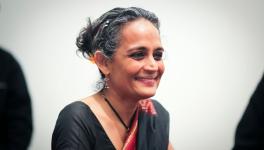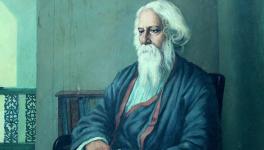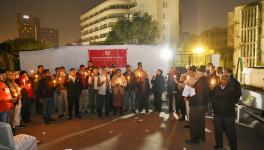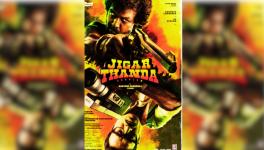Why Bollywood and TV Studios Love to Hate Elites

One of the earliest public conversations triggered by news of the tragic demise of Bollywood actor Sushant Singh Rajput was on nepotism. The discourse spread rapidly, which tells us something about the prevailing popular sentiment and imagination. Bollywood and the news media are instrumental in shaping this imagination and therefore it is important to note what Bollywood’s conception of “nepotism” is.
The popular press speculated right after Rajput’s death that a few well-established Bollywood clans have nurtured an environment that is detrimental to “outsiders”. This gripe, however, is not limited to critiques of Bollywood. Politics is another hotbed of similar outcries, where opposition to “dynastic rule” has reverberated for long. But the charge of perpetuating dynastic rule is primarily directed at the Congress party and the Gandhi family. Other parties that oppose the present regime are also tagged as “dynastic” in this discourse, while the BJP is projected as a meritocratic upstart.
However, despite the hagiographic tributes to Prime Minister Narendra Modi by his party members and admirers, as one who has vanquished nepotism, studies show, the BJP is as dynastic as the Congress. This narrative of the BJP as dynasty-slayer has been repeated ad nauseam over the last two election cycles. It focuses on an assertive commoner—Prime Minister Narendra Modi—who has upended the dominance of an elite.
What is true of politics has trickled down to other fields. “Liberals”, “seculars”, “Lutyens set”, “Khan Market gang” and so on, are overused metonyms for “elites” from almost every walk of life today. Even Bollywood figures have deployed these labels, with the use of clever rhetoric, to array the common person, aam janta, upstanding and virtuous, against an elite. And these divides are being thrown about in news rooms, from where they are finding their way into middle class drawing rooms.
Where the cracks actually lie
Bollywood is not only notorious for excluding so-called outsiders, but also lacks social representation. Dalits, members of tribal communities, and others on the margins of society rarely find pride of place in film-making or acting. This reflects in the storylines of most films, in the identities and values characters portray, and in the notorious overuse of the “saviour complex” as a plot theme.
It is an irony that the news media which highlights these ills is equally guilty of “nepotism”. Successive reports have proven the widespread lack of representation in newsrooms, the neglect of certain kinds of stories on caste equations, and of discriminatory or stereotype-enforcing practices on religion and gender. Inarguably, in many sectors this scenario has prevailed since the colonial period. It is evident that the construction of a “common people” papers over existing cleavages in India’s socio-economy.
The Sushant Singh Rajput tragedy successfully melded onto a populist framework because it became a fresh opportunity to nurture a “people versus elites” conflict. Such a narrative always fits well with the logic of populism, which needs to create internal and external enemies who are allegedly a threat to “the people”. In India, this category is constituted by religious minorities, rights activists, indigenous people, so-called elites and so on. Muslims are also being projected as “elites” of Bollywood, who need to be replaced.
To succeed, a narrative needs to harness discontent and sew it onto a patchwork idea of “the people”. This way, the blame for all deficits is displaced from structural inequalities, social hierarchies and economic misgovernance to “elites” who allegedly collude with the “other”. This helps regimes avoid having to reckon with the political and social consensus that led to India adopting Constitutional provisions to protect minorities, human rights, etc.
When free-market liberalism, aspirational middle classes and a conservative outlook join forces in Bollywood or other spheres, a new political imagination is born, which actors such as Ranaut and her followers and supporters inside and outside Bollywood propagate. For instance, Ranaut claims herself as an outsider in Bollywood despite her successful stint in the film industry. While doing so, she bats against the interests of other “outsiders”.
On 23 August she tweeted, “Cast[e] system has been rejected by modern Indians, in small towns everyone knows it’s not acceptable any more by law and order its nothing more than a sadistic pleasure for few, only our constitution is holding on to it in terms of reservations, Let Go of It, Lets Talk About It.” Ranaut subscribes here to the populist view that affirmative action policies in education and employment for Dalits and backward classes perpetuates caste. Yet, she contradicts herself in another tweet, in which she claims she has the character traits of a “Kshatriya” (the second rung of the ladder from the top in the traditional caste/varna hierarchy), for she has the ability “to lead”.
Who are the ‘elite’?
Ranaut is an apt instance of why it is an egregious mistake to label Indian elites as opponents of the ruling regime. A lion’s share of upper caste voters chose the BJP in 2019, as did middle and upper classes. A disproportionate percentage of parliamentarians come from these sections.
India has an intellectual and political tradition, pioneered by Savitribai and Jyotiba Phule, Iyothee Thass, Mahatma Ayyankali, Dr BR Ambedkar, Periyar and others who have led anti-caste movements. This simplistic “elite versus people” binary is thus far from the truth. As students of Indian politics know, the well-off upper caste agriculturalists, the wealthy urban classes that controlled industries and the market, and the upper echelons of the nationalist polity and bureaucracy, arrived at an uneasy sharing of power in post-colonial India. This arrangement was marked by shifting equations and conflicts. The intermediate agricultural castes in the northwestern states benefited from the Green Revolution and developed a strong political clout. Regional, caste and linguistic elites challenged Delhi-centric power configurations. Such elites may suppress other linguistic groups and socially disadvantaged groups in their own backyard, creating another dynamic.
It is from this contentious field of elites that the nationalist, or nationalising, elites are plucked to play antagonist in contemporary narratives. These were usually Western-educated and highly-placed in the caste order. In the immediate post-Independence period, they took up a tutelary role for the nation. On the one hand, they pushed for modernisation, industrialisation, and so on. On the other, they extolled theological and traditional world-views. Prominent Bollywood figures such as Kangana Ranaut, Anupam Kher, Vivek Agnihotri, amongst others, and the news media, which fulminates against “elites”, belong to the same privileged demographics. They have benefited from the existing socio-economic structure and modernisation projects.
While nationalist history-writing created a past that made space for syncretism, tolerance and inclusivity, to counter the colonial viewpoint and deal with the trauma of Partition, it, too, largely ignored caste, region and other divides. Bollywood and the popular media were part of this project, which was then called “national integration”: in other words, making proper citizens out of a population. Even then “the people” loomed large—simple and virtuous, possessing a harmonious and authentic culture. Yet they were at the mercy of unruly passions and saboteurs who could foment communal violence, even introduce the corrupting influence of the West. Unsurprisingly, the earliest laws on cinema were formulated by Indian nationalists and colonial administrators, driven by apprehensions of cinema’s “western”, libertine influence on the “masses”.
By the seventies, the post-Independence euphoria was already gone, with persistent poverty and land alienation settling in. Then came the ascent of Hindutva and liberalisation, which began in real earnest in the 1990s. The influence of the earlier modernising elites over state policy and the corporate sector waned. Today’s Bollywood and the popular-culture industry are still undergoing this process. For instance, it is under growing pressure to reframe all things Islamic. “Remember songs like ‘tumhi mere mandir, tumhi meri pooja’? Now it is all ‘ayat’, ‘ibadat’ and ‘Maula mere’,” the Hindutva ideologue Shefali Vaidya tweeted in 2017, midway through the first Modi-led government, as she lectured music composers and songwriters online.
Recycling of elites
After economic liberalisation, privately-owned media houses mushroomed and became platforms to disparage state-led welfare measures. They valorised the market as a solution for every malaise. Even these news reports had created a “common man”—one who fought corruption, red tape and so on, a neo-liberal individual who bore no obvious markers of caste, region etc. This common person was proud not to depend on the state—like Mani Ratnam’s Guru, which is said to represent industrialist Dhirubhai Ambani.
The network of post-liberalisation elites in the media and elsewhere deride the older elite as being beholden to the earlier establishment. They claim to represent “New India” and its people. Unlike earlier elites, these new elites do not feel the need for even a veneer of secularism or liberal cosmopolitanism. For readers and viewers who are accustomed to consuming oversimplified narratives, outrightly partisan reports, falsehoods and polarising effects, the news cycle associated with Rajput’s death hardly came as a shock. This section is, by now, accustomed to “argutainment” in studios—all in the name of the “people” or “the nation”. Celebrity hosts hold court as participants bellow over one another with provocative rants, while the openly-biased host often joins in to stoke the flames. Sentimentality reigns supreme, as even facts and research are considered signs of elitism. This melodramatic, Bollywood-esque format usually requires a villain. Sometimes the villains are “anti-national” protesting students, sometimes the departed actor’s former partner, Rhea Chakraborty.
The author is a doctoral student at Jawaharlal Nehru University. The views are personal.
Get the latest reports & analysis with people's perspective on Protests, movements & deep analytical videos, discussions of the current affairs in your Telegram app. Subscribe to NewsClick's Telegram channel & get Real-Time updates on stories, as they get published on our website.
























